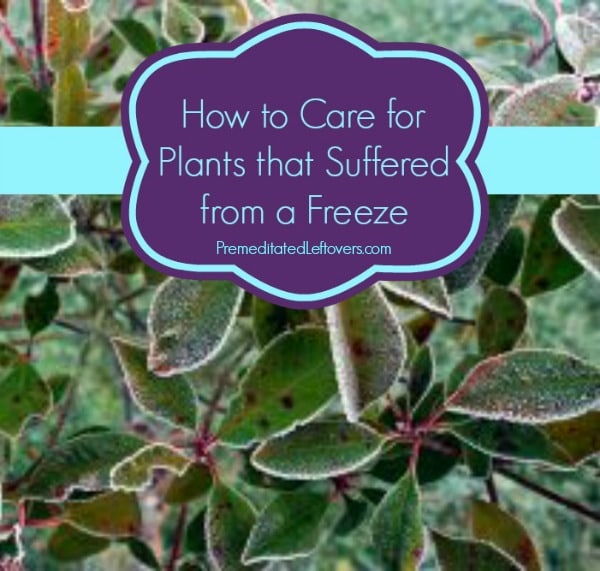If you did not get your plants covered or cared for before the freeze hit, you may have lost a part of or entire plants. Honestly, you won’t know until you do a few things to see how extensive the damage was. These tips will show you How to Care for Plants That Were Damaged in a Freeze depending on the type of plant and the extent of the damage.
How to Care for Plants That Were Damaged in a Freeze
Perennials: If it is a perennial plant where the plant naturally dies back in the winter, you are in luck. You will want to prune back 1/3 of the plant and remove any dead wood. Don’t take off more than 1/3 though as you can send the plant into shock. Once the plant starts to shoot out new growth in the spring, you can then remove another 1/3 of the dead wood. At this point you have triggered to the plant to push out new sprouts. Towards the fall when the plant is shedding its leaves, prune off the remainder of the dead wood. It takes time to get a plant to come back from a freeze, but a little patience goes a long way.
Vegetable or citrus plants: If it was a vegetable or citrus plant that froze, there is a good chance it might come back. If it was a tomato plant, prune off any dead leaves and stems and then add at least 2 inches of potting soil around it burying the stem. The little hairs on the tomato plant will grow new roots and after a couple weeks you will be able to tell if it is going to continue to grow. If you have citrus trees that froze, prune off the dead wood once the tree has stopped its fruit production for the year and after the danger of any more freezes, usually between April-May in Zones 7-9.
Plants that are brown and appear to be completely dead: Don’t pull these plants out right away. Check online to see if it is a plant where new growth comes off old wood or if it comes up from the roots. If it comes off of old wood, wait to see if it sprouts in the spring. If it has no sign of life after a month of giving it fertilizers, then pull the plant out and add it to the compost pile. If it is a plant that the new growth comes from the roots, then prune that plant down to the bottom, leaving just a little of the old growth visible. The plant will then start to send up the new shoots and recover.
Fertilize healing plants: As a plant is going through this healing process, it will need nutrients added to it. Primarily, add compost to the base of the plant and then fertilize it monthly with Blood and Bone Meal. If you can, also give the plant one cup of earthworm castings mixed with the blood and bone meal. These three fertilizers together with give your plant the nitrogren, phosphorous, and potassium that it needs (NPK).
If the plant froze, go ahead and toss it into the compost pile as it will not come back to life.
More Gardening Tips
Winter Vegetable Gardening Guide for Mild Climates
How to Keep Your Poinsettias Alive This Year
10 Tips for Growing Indoor Herbs
Kristi Trimmer is currently running half marathons across the U.S. and blogging about her journey. Follow her journey on DragonflyRunning.com as she shares her running adventures.


Belinda says
Thank you for the helpful information in the article to know if my plants are damaged (or dead).
I have learned so much from your blog!
~Belinda